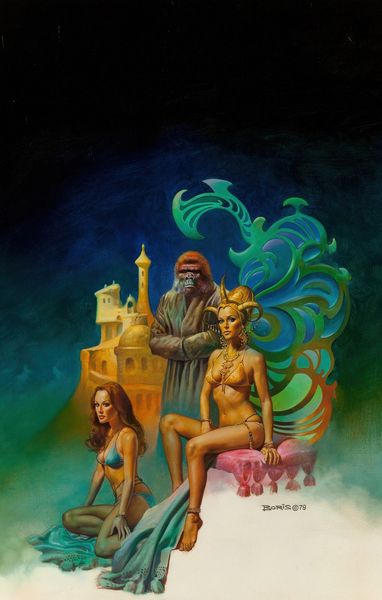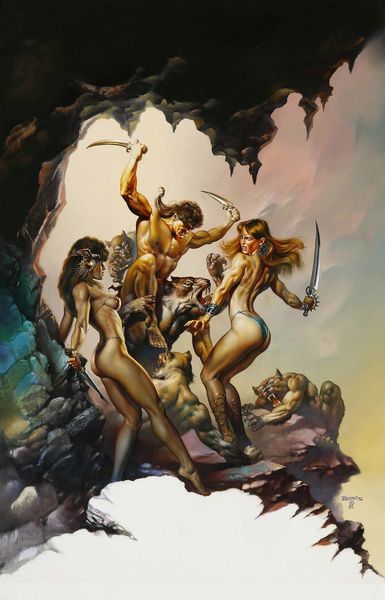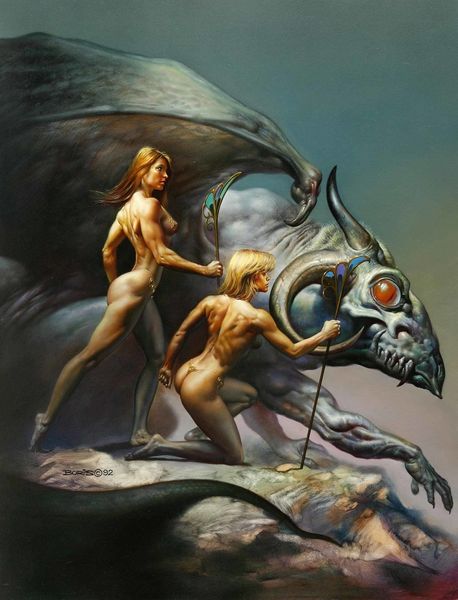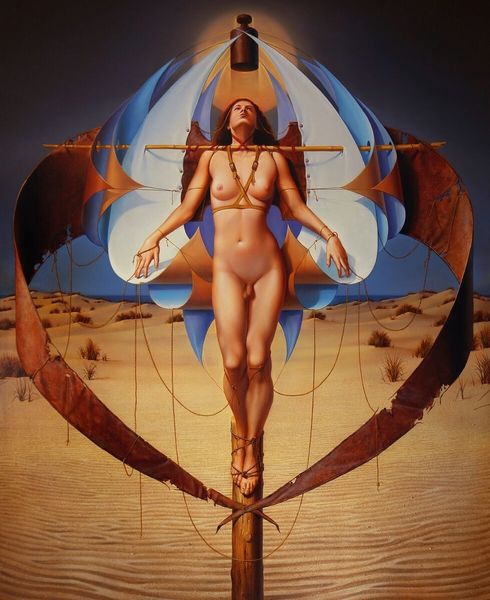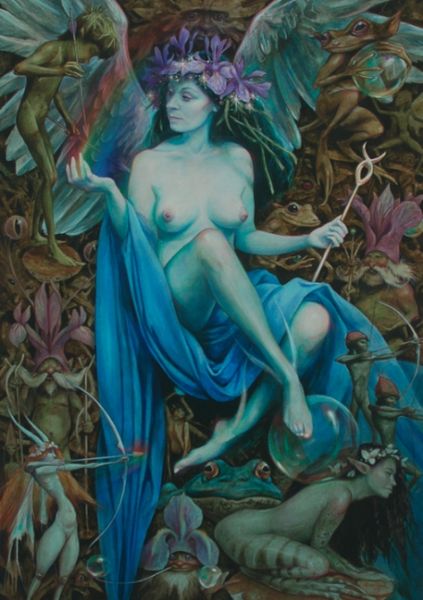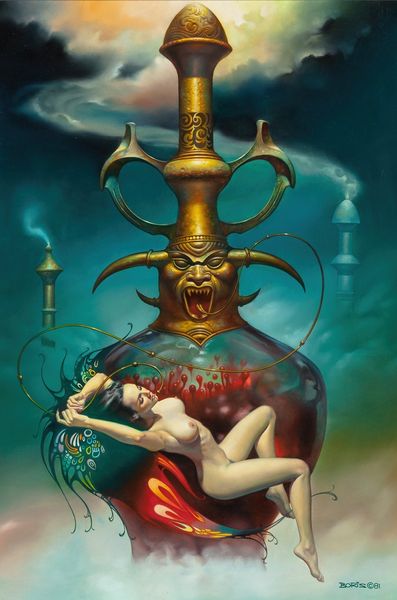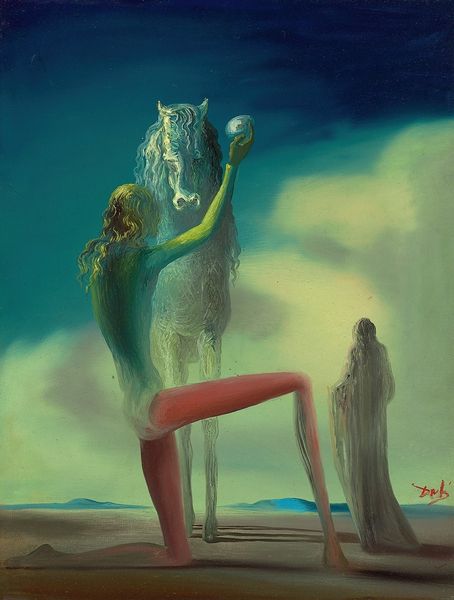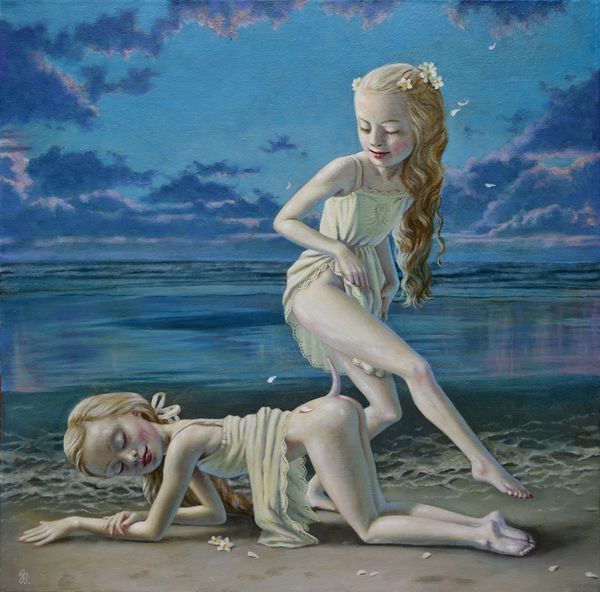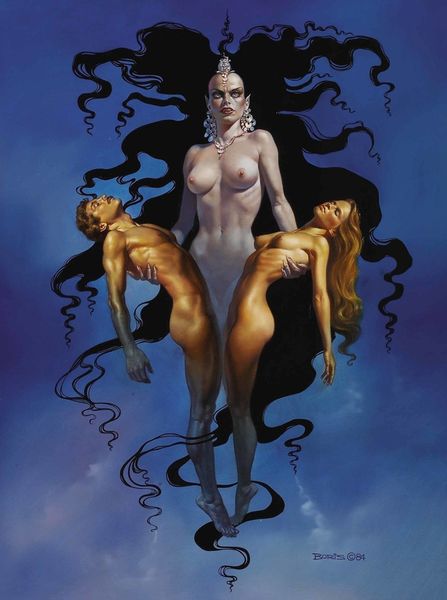
painting, acrylic-paint
#
portrait
#
painting
#
fantasy-art
#
acrylic-paint
#
figuration
#
neo expressionist
#
acrylic on canvas
#
neo-expressionism
#
nude
#
portrait art
Copyright: Modern Artists: Artvee
Curator: Let’s explore Boris Vallejo’s “Angel II,” a fantasy piece from 1984, executed in acrylic on canvas. It presents a striking composition of layered figures. What is your immediate impression? Editor: A sort of melancholic dreamscape emerges; the use of soft blues and purples lends a tranquil, ethereal mood, yet I am immediately questioning its implications in portraying idealized female forms and potentially reductive dynamics between the genders. Curator: Consider the artistic structure—the foregrounded male figure gradually ascends through multiple iterations of female forms, culminating in the largest, most ethereal woman. Note the dynamism in posture and positioning; they’re not static representations. Semiotically, this stacking creates a hierarchy. What readings are made apparent through the arrangement of forms? Editor: Perhaps Vallejo tries to explore power relations. This image seemingly builds a symbolic representation of desire or longing that's very specifically filtered through the male gaze, perpetuating harmful beauty ideals and subordinating women within the structure. Where's the agency or intersectionality? Curator: Yet, look at the deliberate interplay between shadow and light. The application of gradients adds a soft quality, particularly in delineating muscular forms. Notice how Vallejo carefully constructs volume and presence. Compositionally, the open hands signify gesture, perhaps even acceptance. Does this shift the narrative from a critique towards acceptance? Editor: I see that reading; however, it could be further viewed as passively receiving the patriarchal structures presented. The visual echoes, in particular, have a ghostly or spectral quality that evoke subjugation or restriction, even. Curator: That interpretation highlights a critical tension embedded within Neo-Expressionism. “Angel II” reflects anxieties that were being actively negotiated throughout art history by a generation grappling with identity and subjectivity. The male body seems to be looking for enlightenment or to ascend towards these goddess forms, almost literally rising beyond physical form. Editor: While interesting on its own, I am hesitant to remove art from societal discourse—gender remains a salient factor here. If this were viewed from a more nuanced perspective accounting for shifting and varied feminist viewpoints of this time period, new understandings of the body, sexuality, power, and identity could reveal hidden, subversive meaning. Curator: A reading that enriches the work! Editor: Agreed! Analyzing the intersection of aesthetic formalism alongside societal context makes the art experience so fulfilling.
Comments
No comments
Be the first to comment and join the conversation on the ultimate creative platform.
